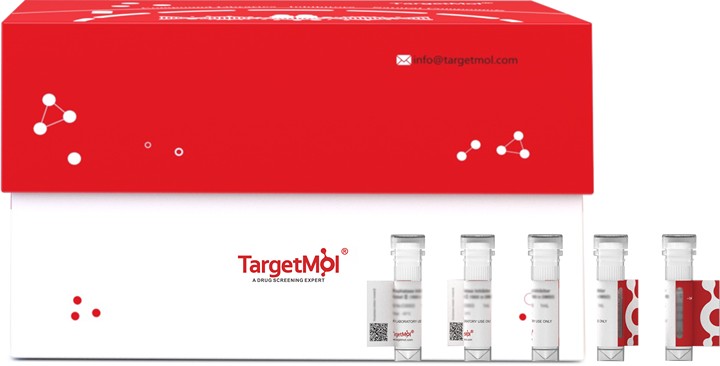Shopping Cart
- Remove All
 Your shopping cart is currently empty
Your shopping cart is currently empty

Rotavirus A (strain St. Thomas 3) VP4 Protein (His) is expressed in yeast with N-6xHis tag. The predicted molecular weight is 28.3 kDa and the accession number is P11200.

| Pack Size | Price | Availability | Quantity |
|---|---|---|---|
| 20 μg | $397 | 20 days | |
| 100 μg | $845 | 20 days | |
| 500 μg | $1,950 | 20 days |
| Biological Activity | Activity has not been tested. It is theoretically active, but we cannot guarantee it. If you require protein activity, we recommend choosing the eukaryotic expression version first. |
| Description | Rotavirus A (strain St. Thomas 3) VP4 Protein (His) is expressed in yeast with N-6xHis tag. The predicted molecular weight is 28.3 kDa and the accession number is P11200. |
| Species | RV-A |
| Expression System | P. pastoris (Yeast) |
| Tag | N-6xHis |
| Accession Number | P11200 |
| Synonyms | Outer capsid protein VP4,Hemagglutinin |
| Amino Acid | AQVSEDIIISKTSLWKEMQYNRDIIIRFKFNNSIIKLGGLGYKWSEISFKAANYQYNYLRDGEQVTAHTTCSVNGVNNFSYNGGLLPTHFSISRYEVIKENSYVYVDYWDDSQAFRNMVYVRSLAANLNSVKCSGGNYNFQMPVGAWPVMSGGAVSLHFAGVTLSTQFTDFVSLNSLRFRFSLTVEEPPFSILRTRVSGLYGLPASNPNSGHEYYEIAGRFSLISLVPSNDDY |
| Construction | 247-479 aa |
| Protein Purity | > 90% as determined by SDS-PAGE. |
| Molecular Weight | 28.3 kDa (predicted) |
| Endotoxin | < 1.0 EU/μg of the protein as determined by the LAL method. |
| Formulation | Tris-based buffer, 50% glycerol |
| Reconstitution | A Certificate of Analysis (CoA) containing reconstitution instructions is included with the products. Please refer to the CoA for detailed information. |
| Stability & Storage | Lyophilized powders can be stably stored for over 12 months, while liquid products can be stored for 6-12 months at -80°C. For reconstituted protein solutions, the solution can be stored at -20°C to -80°C for at least 3 months. Please avoid multiple freeze-thaw cycles and store products in aliquots. |
| Shipping | In general, Lyophilized powders are shipping with blue ice. Solutions are shipping with dry ice. |
| Research Background | Spike-forming protein that mediates virion attachment to the host epithelial cell receptors and plays a major role in cell penetration, determination of host range restriction and virulence. Rotavirus attachment and entry into the host cell probably involves multiple sequential contacts between the outer capsid proteins VP4 and VP7, and the cell receptors. It is subsequently lost, together with VP7, following virus entry into the host cell. Following entry into the host cell, low intracellular or intravesicular Ca(2+) concentration probably causes the calcium-stabilized VP7 trimers to dissociate from the virion. This step is probably necessary for the membrane-disrupting entry step and the release of VP4, which is locked onto the virion by VP7. During the virus exit from the host cell, VP4 seems to be required to target the newly formed virions to the host cell lipid rafts.; Forms the spike 'foot' and 'body' and acts as a membrane permeabilization protein that mediates release of viral particles from endosomal compartments into the cytoplasm. During entry, the part of VP5* that protrudes from the virus folds back on itself and reorganizes from a local dimer to a trimer. This reorganization may be linked to membrane penetration by exposing VP5* hydrophobic region. In integrin-dependent strains, VP5* targets the integrin heterodimer ITGA2/ITGB1 for cell attachment.; Forms the head of the spikes and mediates the recognition of specific host cell surface glycans. It is the viral hemagglutinin and an important target of neutralizing antibodies. In sialic acid-dependent strains, VP8* binds to host cell sialic acid, most probably a ganglioside, providing the initial contact. In some other strains, VP8* mediates the attachment to histo-blood group antigens (HBGAs) for viral entry. |

Copyright © 2015-2025 TargetMol Chemicals Inc. All Rights Reserved.